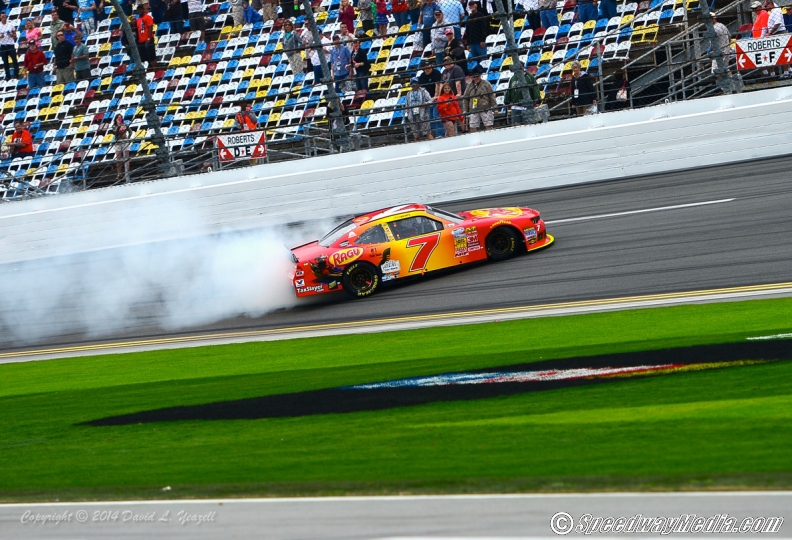Which driver has the highest level of success? Well, if the point of racing is to finish first, then the answer comes easy. Last Sunday, Dale Earnhardt Jr was the most successful driver in the Daytona 500. There is no argument.
So, who is the best over the course of an entire season and how should that be measured? NASCAR figures a 16-driver, 10 race, four round elimination system is the way to go. I propose giving 69-70 points per win (up from 47-48) and eliminating the Chase could be another. However, what if NASCAR had decided to award their championship to the driver with the most wins during the season, those with the most successful races, using points as a tie-breaker?
At present, Richard Petty and Dale Earnhardt lead the way with seven titles, with Jimmie Johnson at six, and Jeff Gordon with four. Five more drivers have each claimed three crowns, all either present or future Hall of Famers in Lee Petty, David Pearson, Cale Yarborough, Darrell Waltrip, and Tony Stewart. However, if wins trumped points per season, the landscape would change, and I dare say a lot of NASCAR fans would not like it.
Leading the way as the sport’s greatest driver would be Jeff Gordon. Six times between 1995 and 2001, including five straight, he was the season’s most successful driver. Richard Petty did it five times, with David Pearson and Darrell Waltrip one behind. Our three time “winners” would have included Cale Yarborough, Bill Elliott, Rusty Wallace, and Jimmie Johnson. As for Dale Earnhardt, he had the most wins in a season just twice, in 1987 and 1990. I told you some might not like that statistic.
Why rewrite history, why reinvent the wheel? So, to determine the most successful driver all I did was eliminate the Chase and give added weight to victories. As we go through the season, I’ll leave it to you to determine if this succeeds in doing so.
Our hottest 20 drivers coming out of Daytona are…
| Driver | Win | Points | Diff | |
| 1 | Dale Earnhardt, Jr. | 1 | 70 | |
| 2 | Denny Hamlin | 0 | 43 | -27 |
| 3 | Brad Keselowski | 0 | 42 | -28 |
| 4 | Jeff Gordon | 0 | 40 | -30 |
| 5 | Jimmie Johnson | 0 | 40 | -30 |
| 6 | Matt Kenseth | 0 | 38 | -32 |
| 7 | Greg Biffle | 0 | 37 | -33 |
| 8 | Ricky Stenhouse, Jr. | 0 | 37 | -33 |
| 9 | Austin Dillon | 0 | 36 | -34 |
| 10 | Joey Logano | 0 | 34 | -36 |
| 11 | Casey Mears | 0 | 34 | -36 |
| 12 | Kevin Harvick | 0 | 31 | -39 |
| 13 | Jamie McMurray | 0 | 30 | -40 |
| 14 | Bobby Labonte | 0 | 29 | -41 |
| 15 | Reed Sorenson | 0 | 28 | -42 |
| 16 | Carl Edwards | 0 | 28 | -42 |
| 17 | Marcos Ambrose | 0 | 26 | -44 |
| 18 | Kyle Busch | 0 | 26 | -44 |
| 19 | Kurt Busch | 0 | 24 | -46 |
| 20 | Terry Labonte | 0 | 24 | -46 |








It could happen, but the odds are long. As long as the 16 spots are not all taken up by race winners, 26 straight Top 10’s should garner enough points to slip in.
Yet, it could happen.
Under the current system, a driver could have 26 top tens without a win and not win a championship. This will happen eventually and it won’t be right.